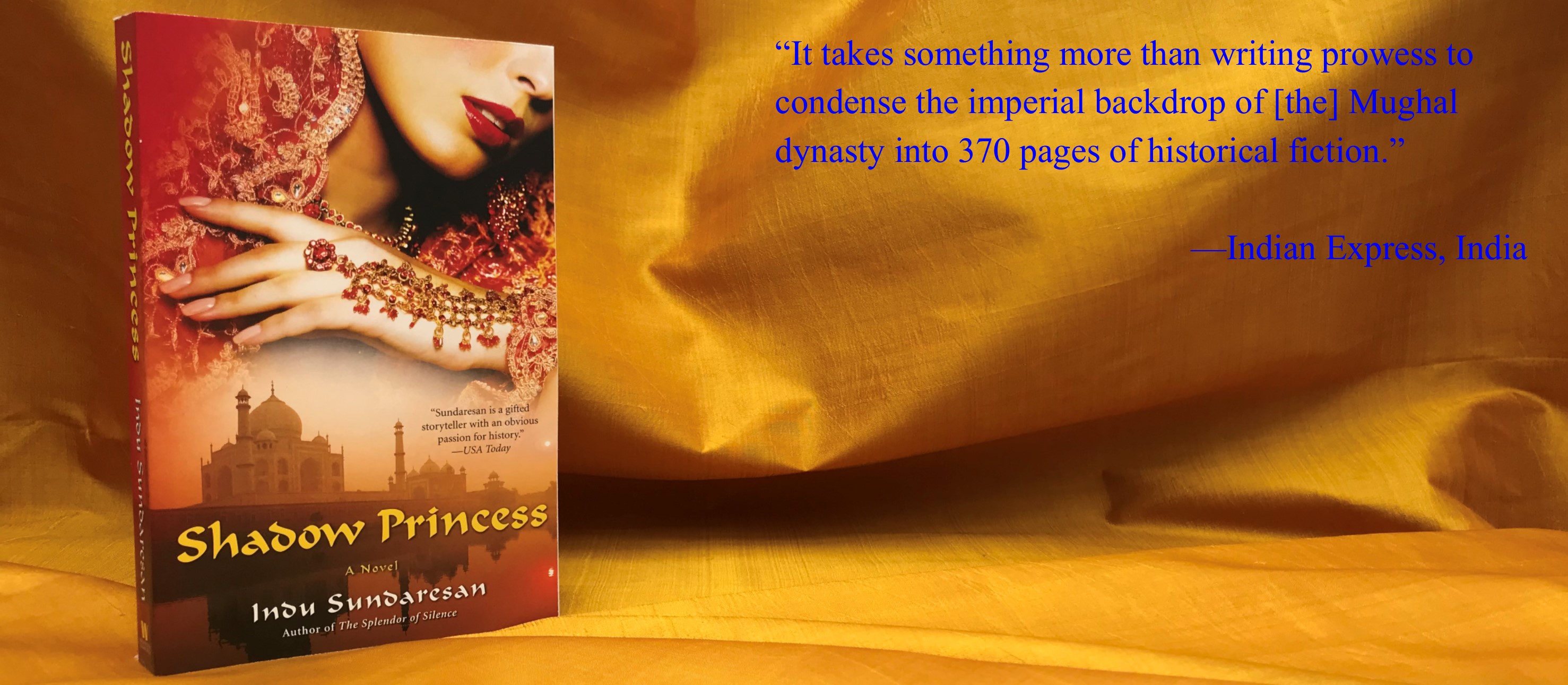BOOK THREE of the Taj Trilogy
BOOK ONE: The Twentieth Wife BOOK TWO: The Feast of Roses
- The novels of the Taj Trilogy are more or less self-contained; you can read out of order, but preferably, read in order.
Synopsis
ON WEDNESDAY, JUNE 17th, 1631, Empress Mumtaz Mahal was brought to bed to deliver her fourteenth child. A few hours later, she was dead.
By her side were her husband, Emperor Shah Jahan, and a grown daughter, Princess Jahanara. This death, of a beloved wife and mother, shattered their world. Shah Jahan had spent years battling his father’s twentieth wife (see The Feast of Roses) to capture the throne, had taken his wife and children into exile, had fled from place to place as his father’s army pursued them, and had finally, in 1628, conquered his hard-fought-for empire. And now, with barely a chance of enjoying their reward, Mumtaz Mahal was dead. He plunged into grief, emerging three years later to the public with suddenly-whitened hair, stooped and weakened by mourning.
Jahanara bore all of this burden—the loss of her mother, the sorrow of her father, and the care of her six siblings. Mumtaz Mahal and Shah Jahan had seven surviving children.
Only seventeen when her mother died, Jahanara took on the responsibility of ruling the imperial harem, unusual for her times, because it was normally a wife, not a daughter, who became the Padshah Begam—the chief lady of the harem. She groomed her brother, Dara Shikoh, who was the oldest son, for his role as heir. There was one enemy within the harem she underestimated, her sister Roshanara Begam, three years younger, but covetous and jealous of Jahanara’s power. Between them, sprung a rivalry of sorts, and they battled to put a different brother on the throne after their father, and fought for the love of the same man, even though they were effectively not allowed to marry at all.
Over the years, Emperor Shah Jahan built a tomb for his wife, a poem in white marble, with four floating marble spires, a long rectangular pool in front which reflected the tomb, lush gardens filled with fruit trees, a grand gateway, and a busy bazaar beyond which would pay for the upkeep of the tomb in the years after. He called it the rauza-i-munavvara—the Luminous Tomb. We know it as the Taj Mahal.
Painstakingly researched, Shadow Princess is the story of Princess Jahanara and the Mughal Empire in India at the height of its glory. It is the story of a young woman who comes of age during strife and grief and who keeps a strong hold on the power and politics in the Mughal court. If you know something of India’s history, you will know that she doesn’t eventually succeed in her attempt to put her favored brother on the throne, and spends eight years imprisoned with her father. And yet, in her time, without an official title, she was a formidable and influential woman. One whose life is today cast in the long and elegant shadow of the tomb her father built for her mother—the Taj Mahal.


